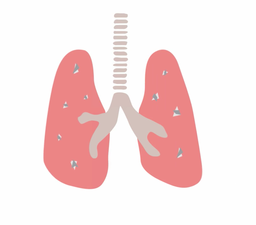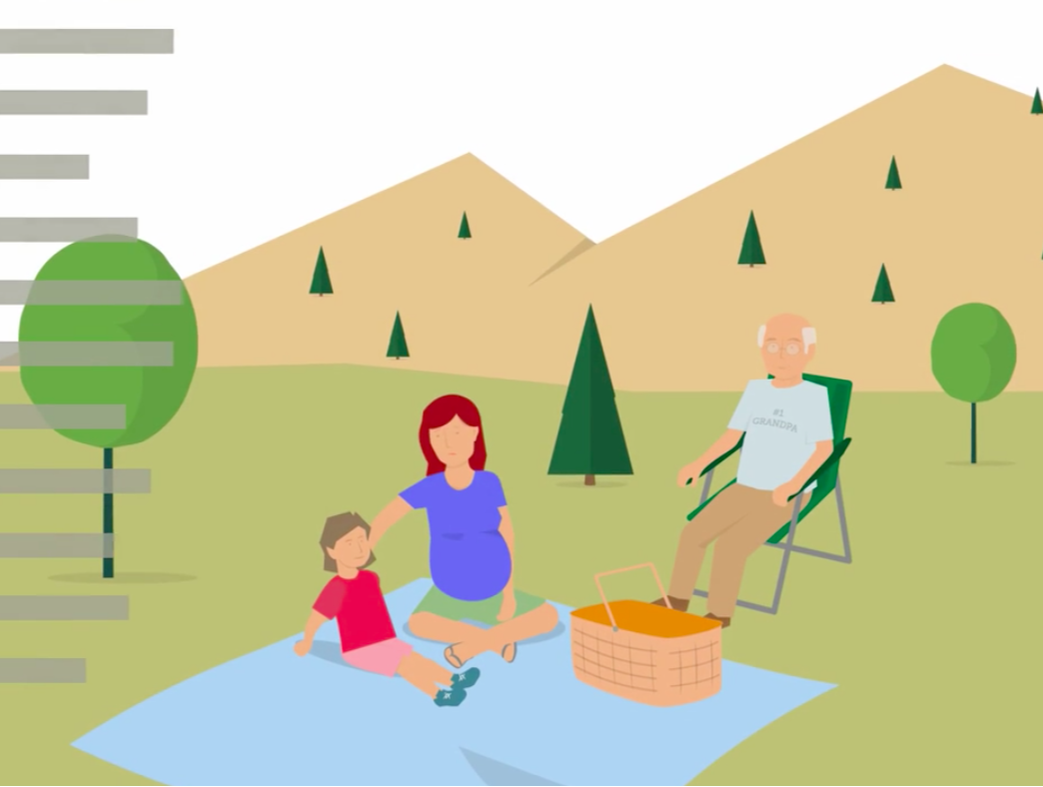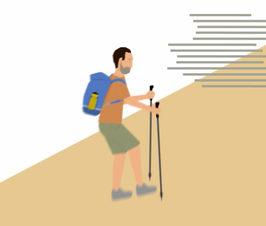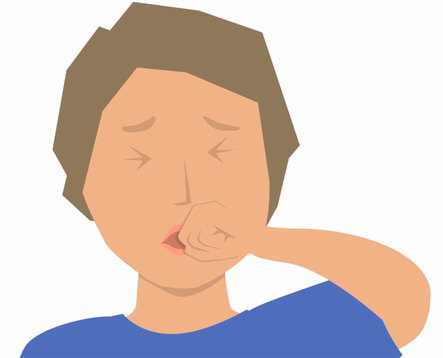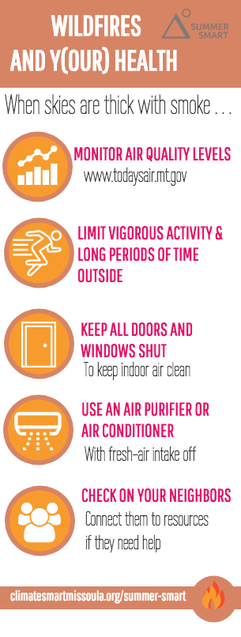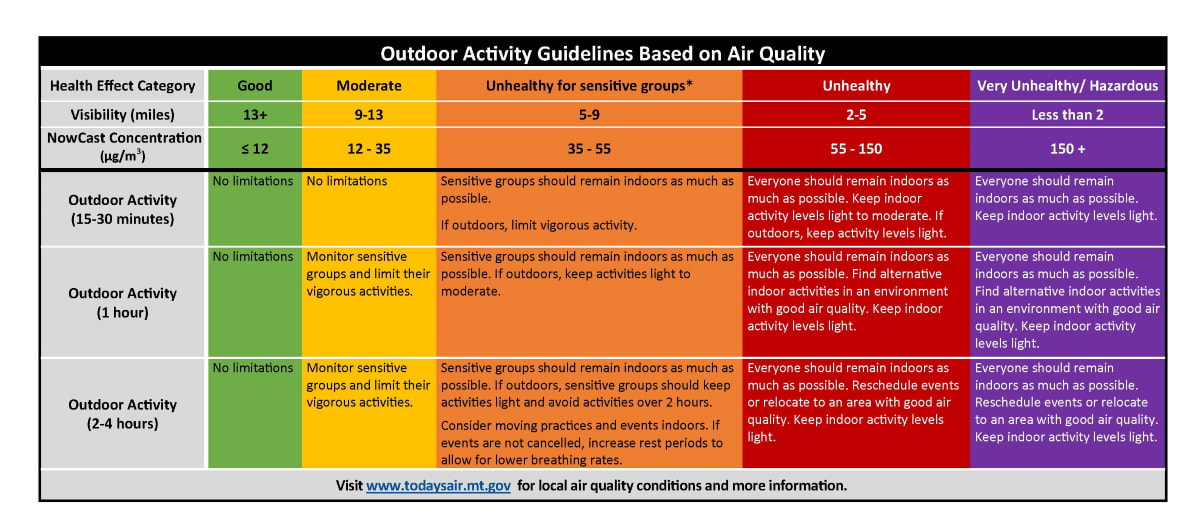|
Wildfire smoke is made up of a complex mixture of gases and particles, including fine particulate matter (PM2.5). Unfortunately, these tiny particles easily move deep into the lungs and circulatory system. Once these particles reach the lungs and bloodstream, they can trigger inflammation and other unwanted health responses. The more we learn about the dangers of PM2.5, the more concern we have. In fact, any level of air pollution is harmful. Yikes.
|
We keep learning more about the health implications of wildfire smoke:
|
What are the health effects of wildfire smoke?
Smoke affects everyone differently, both physically and mentally. Healthy folks may or may not feel any immediate impacts during smoke events. Be cautious with how much time you spend and how active you are outdoors even if you do not experience any obvious symptoms of smoke related illness. Smoke exposure can potentially harm respiratory, cardiovascular, and immune system health. For certain individuals, wildfire smoke could have very specific health implications. Read more below or speak to your health care provider.
|
Symptoms of smoke exposure
Coughing Trouble breathing Stinging or Itching eyes Scratchy throat Headache Lack of energy Changes to appetite Changes in sleep patterns Feelings of hopelessness, irritability, or depression For some individuals, smoke exposure can increase the risk of respiratory illness and infection such as bronchitis, asthma, pneumonia, and Chronic Obstructive Pulmonary Disease. Others may experience cardiovascular issues and even heart attack. Pay attention to your body and your loved ones, and talk to your doctor if you are concerned. |
who is at risk?
While all of us are affected by smoke, some disproportionately experience health impacts. Children with developing lungs are at increased risk of health impacts because the particles can affect lung function and growth. Seniors, pregnant people, and people with asthma or other pre-existing conditions are at greater risk as well. If you or a loved one belongs in one of these groups, read more below to find out how they are at risk and what you can do to protect them.
|
Children
Potential Effects from Smoke:
|
Pregnant People
Potential Effects from Smoke:
|
People who have asthma Potential Effects from Smoke:
|
|
Seniors (65+) Potential Effects from Smoke:
|
Chronic Heart or Lung Disease: Potential Effects from Smoke:
|
Circulatory System Disease: Potential Effects from Smoke:
|
- What Seniors and People with Heart, Lung, and Circulatory System Diseases Can Do:
- Consult your healthcare provider and follow their advice if you have any specific medical concerns about prescription drugs that you are taking
- Have an adequate supply of medication on hand (more than 5 days worth) in case of an emergency
- Reduce the amount of time you’re breathing unhealthy air by going to or creating a Clean Indoor Air space.
Stay healthy during smoke events
- For reducing smoke exposure at home, consider purchasing a HEPA air filtration unit.
- We highly recommend this OUTDOOR ACTIVITY recommendation chart to help decide when to be active. It's designed for coaches, schools, day care centers, and summer camps, but it's handy for anyone who works or plays in the outdoors.
- When the air is unhealthy, indoors may be the best place to be. Learn how to create healthy indoor air at home.
- If you work outside and can't avoid the smoke, any amount of time spent in an indoor space where the air is cleaner can help - even if that's just on your lunch break or after you get home from work.
- Another option for keeping particulate matter from wildfire smoke out of your lungs is to wear a particulate respirator mask, also known as an N95 or P100 mask, with two straps. One-strap masks, surgical masks, and bandanas do NOT filter out the tiny particulate matter present in wildfire smoke. Keep in mind that particulate respirator masks must fit tightly to work properly, so they actually make breathing more difficult and are not recommended for folks who already have trouble breathing, or for use while engaged in strenuous physical activity.
Physical activity during wildfire smoke
|
When we exercise, we breathe more quickly and deeply. During periods of wildfire smoke, this means that we pull more pollutants into our lungs than we would while breathing normally at a resting heart rate. Because of this increased rate of inhaling smoke pollution, people who exercise frequently outdoors may be at greater risk of experiencing harmful health impacts during times of smoke, especially if they choose to continue outdoor activity.
If possible, reduce outdoor physical activity, and ensure any indoor activity is in a space with filtered air. See our Public Spaces page to know what questions to ask your local gym in order to know how safe the indoor air is. Getting outside is important though, and no one wants to miss the warm sunny days of summer, so be sure to check current air quality and smoke forecasts on our TodaysAir page so that you can plan your outdoor activity for times with less smoke. Mental and physical health is important, so be sure to find a balance between protecting yourself from smoke and getting outside to move around. And remember, the smoke will clear! Competitors and Coaches Losing precious time to train, practice, and workout is a pain. When wildfire smoke lingers for multiple weeks, it's easy to brush it off and decide to push through it, thinking that staying indoors could be more detrimental to a season. However, the growing body of research on wildfire smoke is showing that even in healthy individuals, harmful health impacts can be seen long after the smoke dissipates. Asthma, lung infections such as bronchitis and pneumonia, and more are linked to wildfire smoke exposure, and could be just as disruptive to a season, if not more. It's also important to recognize that all people will react to smoke differently, and athlete complaints of discomfort should be taken seriously. Guidelines! This table below provides guidelines for anyone who frequently exercises outdoors - it can be viewed and downloaded HERE (has a few more details). There is also a slightly different chart for schools and childcare facilities HERE. Read the 'Outdoor Physical Activity' section on our Outdoor Safety page for more. |
The chart above with more details can be viewed and downloaded HERE.
There is also a slightly different chart for schools and childcare facilities HERE.
For more about how to use the chart above, or how to figure out air quality in your area based on visibility, click here.
There is also a slightly different chart for schools and childcare facilities HERE.
For more about how to use the chart above, or how to figure out air quality in your area based on visibility, click here.
Read more about the current research on the health impacts of wildfire smoke by going to the the Science page.

